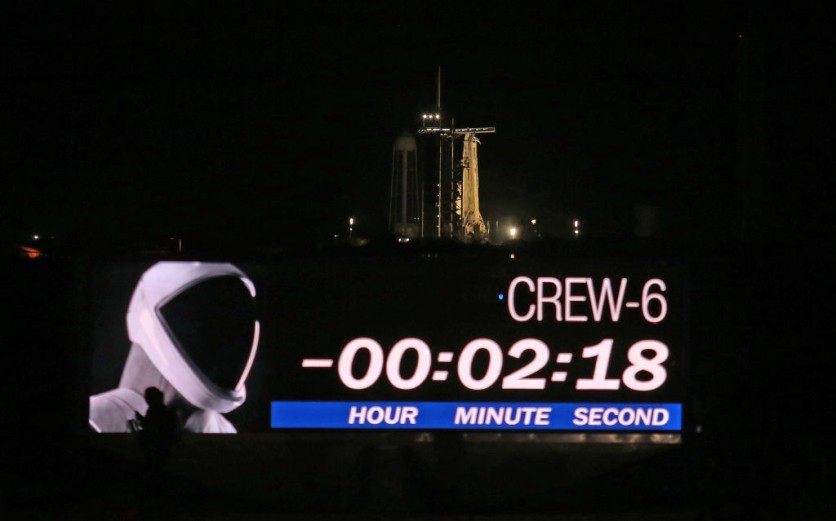A ground system failure prevented NASA and SpaceX from attempting to launch the agency's Crew-6 mission to the International Space Station (ISS) on Monday, Feb. 27.
Mission crews chose to stand down to examine an issue preventing data from confirming a complete load of the ignition source for the Falcon 9 first-stage Merlin engines, triethylaluminum triethylboron (or TEA-TEB).

Delayed Launch
"I'm proud of the NASA and SpaceX teams' focus and dedication to keeping Crew-6 safe," NASA Administrator Bill Nelson said in a statement, quoted by NASA's latest blog post.
"Human spaceflight is an inherently risky endeavor and, as always, we will fly when we are ready."
The Falcon 9 rocket's propellant has been defueled by SpaceX, and the astronauts have left the Dragon spacecraft to head to the crew quarters. Both the Falcon 9 and Dragon are in a safe configuration, according to NASA.
On Tuesday, Feb. 28, NASA and SpaceX will not attempt a launch because of the adverse weather predictions.
In the event that the technical issue blocking Monday's launch cannot be resolved, the following launch attempt will take place at 12:34 AM EST on Thursday, Mar. 2.
Testing Site for Artemis
The Crew-6 will undertake investigations to advance long-duration off-Earth habitation in the future.
Crew-6 pilot Warren "Woody" Hoburg, a first-time NASA astronaut, said that the space station would become a testing site for Artemis.
He noted that since long-duration astronaut stays there commenced 22 years ago, the ISS has housed several tests of technologies. But for the Crew-6 mission, the studies will focus on how it will aid NASA's future missions to the moon.
According to NASA documents, a few of the moon-related investigations planned include a microscope that would function on the moon's surface, a study of space station microorganisms that might keep personnel healthy on the moon, and an experimental high-speed communications system.
In 2020, the United Arab Emirates (UAE) ratified the Artemis Accords, an international framework for peaceful lunar exploration sponsored by NASA. Hence, for the upcoming journey, Crew-6 will include an astronaut from the United Arab Emirates.
Sultan Al Neyadi, who accepted the eight-day maiden mission in 2019, is the first UAE astronaut in the program to accept a lengthy mission. Al Neyadi was assigned to Crew-6 after a series of astronaut seat transactions among the participating ISS nations.
Related Article : NASA Will Land On The Moon For The First Time in 50 Years l Here's Everything You Need To Know About Artemis 1

ⓒ 2025 TECHTIMES.com All rights reserved. Do not reproduce without permission.




